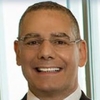Drafting and Defending Software Patents: Meeting Sections 102, 103, and 112 Requirements

Welcome! Strafford is now BARBRI! The expert courses you know from the trusted global leader in legal education.
Course Details
- smart_display Format
On-Demand
- signal_cellular_alt Difficulty Level
- work Practice Area
Patent
- event Date
Thursday, July 22, 2021
- schedule Time
1:00 p.m. ET./10:00 a.m. PT
- timer Program Length
90 minutes
-
This 90-minute webinar is eligible in most states for 1.5 CLE credits.
-
Live Online
On Demand
This CLE course will guide patent practitioners on drafting their software patent applications to comply with Section 102, 103, and 112 requirements and defending software patents from attacks under those statutory sections. The panel will discuss federal court guidance, prosecution guidelines, and offer litigation and prosecution strategies.
Faculty

Mr. Kiklis focuses on PTAB litigation as well as district court patent litigation. He also handles Federal Circuit appeals from his cases. With an extensive background in computer science, his technological focus is on software patent matters. Mr. Kiklis frequently handles high stakes matters, having been involved in several cases in which over $1 billion was at stake.

Mr. Kunin represents clients in post-grant patent proceedings at the U.S. Patent and Trademark Office. He also serves as an expert witness and consultant on patent policy, practice and procedure. During his tenure at the USPTO, he served in many executive positions, including as Deputy Commissioner for Patent Examination Policy.
Description
While practitioners emphasize meeting the Section 101 requirements, software patents, like other U.S. patents, must also meet the novelty, non-obviousness, and written description/enablement requirements of Sections 102, 103, and 112.
When preparing and prosecuting software-related inventions, prosecution counsel should be mindful of the challenges in meeting the non-obviousness requirement post-KSR v. Teleflex. Addressing an obviousness rejection is complex. Examiners regularly reject patent claims as obvious under Sect. 103 given a combination of prior art references applying guidance outlined in the MPEP. It is not enough to argue that the examiner has not established a prima facie case of obviousness or has not found a teaching, suggestion, or motivation to combine the prior art.
Also, the written description must establish that the applicants possessed the claimed invention by showing the relevant identifying characteristics of the claimed invention through drawings, flow charts, words, and in some cases, program listings submitted in computer-readable form. In particular, when means plus function limitations are employed, sufficient corresponding structure or specific algorithms for each embodiment are needed.
Listen as our authoritative panel of patent attorneys reviews recent court and PTAB guidance. The panel will provide best practices for drafting patent applications/claims to meet Section 102, 103, and 112 requirements and minimize the likelihood of rejections.
Outline
- Challenges in drafting software patent specifications
- Best practices for drafting software patent claims
- Guidance from Federal Circuit and PTAB decisions for meeting requirements
- Novelty
- Non-obviousness
- Written description
- Enablement
- Claim definiteness
- Defending Section 102, 103, and 112 challenges at the district court and PTAB
Benefits
The panel will review these and other high priority issues:
- What are the hurdles for patent counsel to demonstrate a software-related claim is novel and non-obvious during prosecution?
- What is the best way to defend against Section 102, 103, or 112 attacks at the district court and the PTAB?
Unlimited access to premium CLE courses:
- Annual access
- Available live and on-demand
- Best for attorneys and legal professionals
Unlimited access to premium CPE courses.:
- Annual access
- Available live and on-demand
- Best for CPAs and tax professionals
Unlimited access to premium CLE, CPE, Professional Skills and Practice-Ready courses.:
- Annual access
- Available live and on-demand
- Best for legal, accounting, and tax professionals
Unlimited access to Professional Skills and Practice-Ready courses:
- Annual access
- Available on-demand
- Best for new attorneys
Related Courses

Doctrine of Equivalents in Patent Prosecution: DOE Application, Festo Exceptions, Recent Case Law Developments
Monday, October 13, 2025
1:00 p.m. ET./10:00 a.m. PT

Inherency Doctrine in Patent Prosecution and Litigation
Available On-Demand